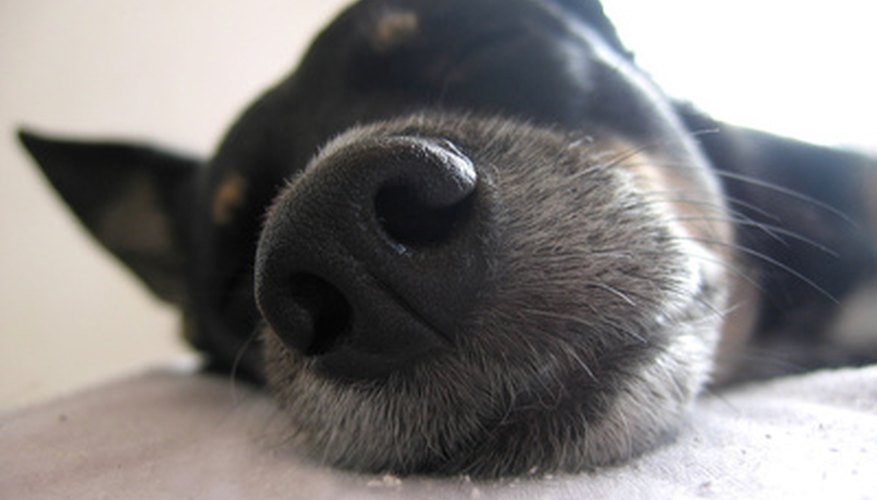After a dog has surgery, oftentimes the hardest part of the recovery process is preventing the dog from scratching at the incision site. As the site heals, the skin around the sutures dries up. Dogs will seek relief through compulsive licking and biting on the stitches, which can cause irritation, fluid build-up and swelling. You can help your dog relieve the itchiness, which will speed up the healing process.
- After a dog has surgery, oftentimes the hardest part of the recovery process is preventing the dog from scratching at the incision site.
- Dogs will seek relief through compulsive licking and biting on the stitches, which can cause irritation, fluid build-up and swelling.
Apply a topical solution to relieve itchiness around the incision. Use a sterile cotton swab to apply an over-the-counter remedy directly on the incision, such as aloe vera, calendula cream arnica gel or antibiotic ointment.
Place a warm compress on the site three times daily to reduce swelling, irritation and aid in fluid drainage. Some dogs prefer cold compresses, so you might need to experiment to find out which provides better relief.
Ask your vet for a prescription of a corticosteroid if your dog's itchiness is severe enough to compromise the surgery site. Steroidal drugs such as cortisone, hydrocortisone, prednisone and dexamethasone provide rapid relief for short-term health issues. Before administering this drug, be aware of the potential side effects it may have on your dog's health by reading the labels.
Distract your dog from the itchiness. Use a cone-shaped Elizabethan collar, which can be obtained at a veterinarian's office or at a pet store. Place the collar around your dog's neck and fasten it closed. Your dog should continuously wear this device unless he needs it removed to eat and drink. As much as your dog may dislike wearing it, remember that these collars are the best method for preventing your dog from reaching the incision with his mouth and scratching his stitches.
- Ask your vet for a prescription of a corticosteroid if your dog's itchiness is severe enough to compromise the surgery site.
- As much as your dog may dislike wearing it, remember that these collars are the best method for preventing your dog from reaching the incision with his mouth and scratching his stitches.
TIP
In addition to the Elizabethan collar, you can fit him with a T-shirt which covers the surgery site. For stitches on the front half of the body, slip his head through the neck opening, put legs through the armholes and tie the bottom into a knot on top of his back. For rear-half incisions, the T-shirt would work in reverse, with the tail through the neck opening. If a T-shirt doesn't work, you can purchase a post-surgery body suit made specifically for dogs. These snug-fitting suits are made with Lycra and come in whole- and partial-body designs.
WARNING
Check the incision area frequently to look for signs of trauma, including severe redness, swelling, discharge or foul smells. This may indicate infection. Contact your veterinarian if you see any of these symptoms.
